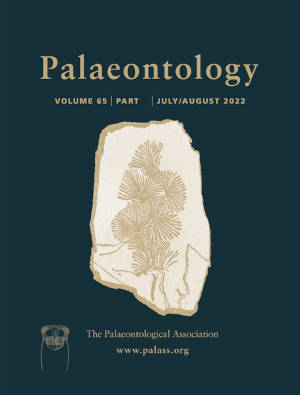Article: Skeletal and soft tissue completeness of the acanthodian fossil record
Publication: Palaeontology
Volume:
65
Part:
4
Publication Date:
2022
Article number:
e12616
Author(s):
Lisa Schnetz, Richard J. Butler, Michael I. Coates, and Ivan J. Sansom
Abstract
Abstract Acanthodians are a poorly understood paraphyletic grade of extinct Palaeozoic fishes. They play an increasingly prominent role in our understanding of vertebrate evolution as part of the chondrichthyan stem-group even though their evolutionary history is scarce. The limited preservation of their mostly cartilaginous skeleton largely results in a bias towards isolated remains such as fin spines and scales. Here, we quantify the quality of the acanthodian fossil record by using a variation of the Skeletal Completeness Metric (SCM), an approach that calculates how complete the skeletons of individuals are compared to their theoretical complete skeleton. A novel Soft Tissue Completeness Metric (STCM) is introduced to estimate the percentage of soft body tissue preserved as an alternate measurement of completeness. Completeness scores for >1600 specimens comprising >300 taxa obtained from museum collection visits and literature surveys were assembled into a database. Acanthodian completeness peaks in the Lower–Middle Devonian, Pennsylvanian, and earliest Permian. There is no correlation between acanthodian taxonomic richness and completeness. Acanthodians show a significantly lower completeness distribution than many tetrapod groups, but a similarly low distribution to bats. Skeletons deposited in freshwater are significantly more complete than in marine environments where sea level significantly negatively correlates with observed completeness. Our assessment reveals only weak spatial biases influencing the acanthodian fossil record while environmental biases are much higher. This quantified evaluation of acanthodians provides a foundation for further assessments of the likely influence of character absences from morphological datasets on estimates of early chondrichthyan and, therefore, early gnathostome evolution.
